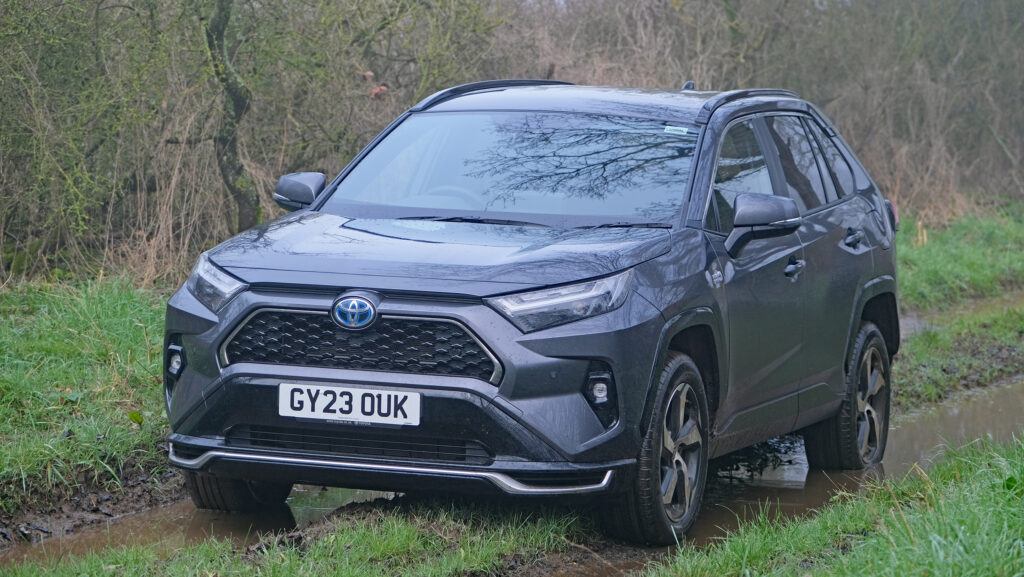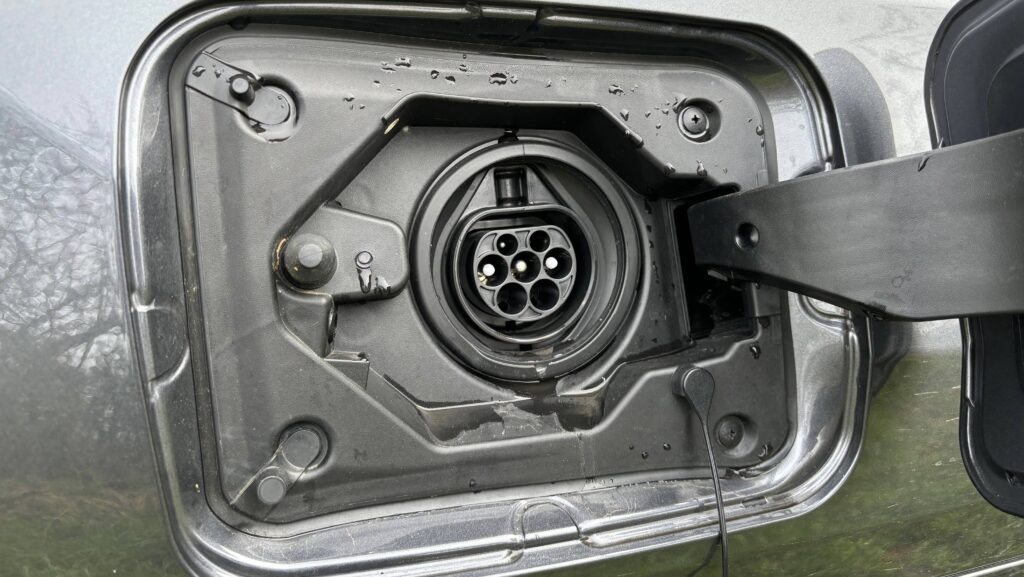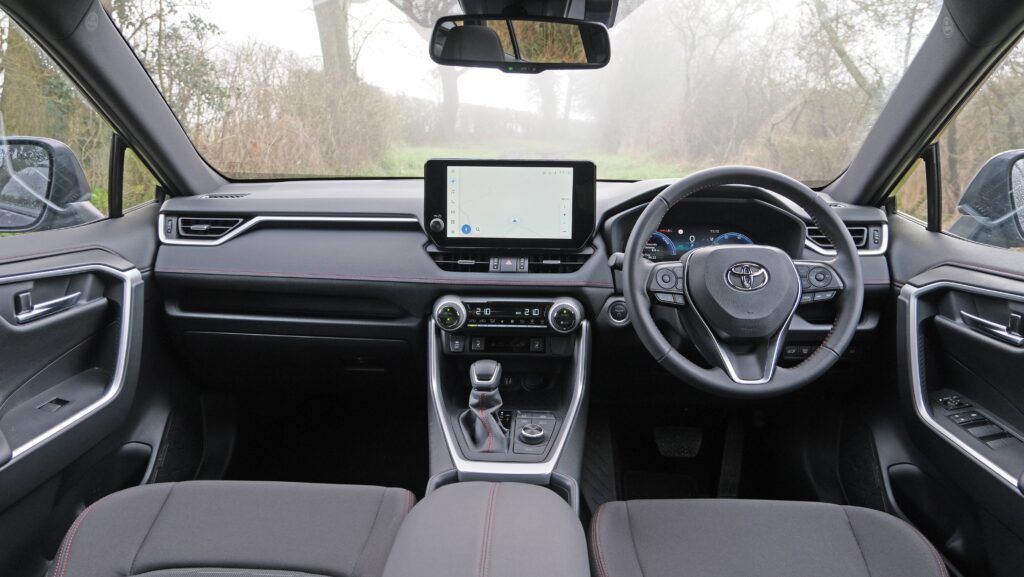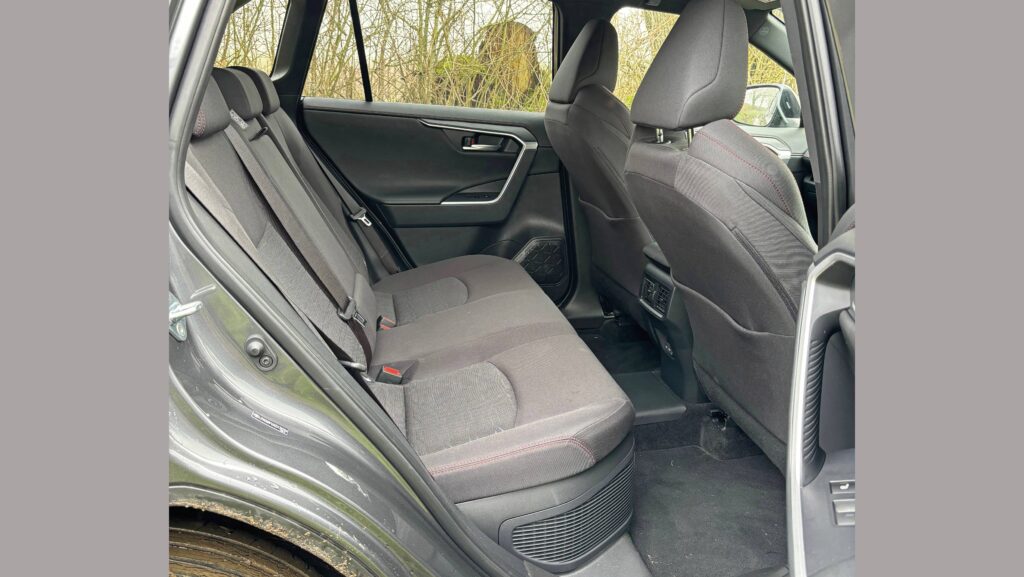On test: Toyota’s super-frugal Rav4 plug-in hybrid
 © James Andrews
© James Andrews Toyota reckons its latest Rav4 plug-in hybrid can return an impressively frugal 282mpg. James Andrews finds out if it delivers in the real world
Comfortable, capable and practical they might be, but 4x4s have long been plagued by one particular problem – fuel economy.
Not so for Toyota’s latest Rav-4 plug-in hybrid which, if the bumf can be believed, manages to eke 282 miles from each precious gallon of octane.
See also: On test: Nissan X-Trail gets new practical hybrid powertrain
Too good to be true, you say? Definitely. But even if it could deliver a quarter of that figure, Toyota might be onto something.
Once available with a torquey diesel and straight-up petrol, hybrid drivetrains are now the only option for wannabe Rav4 owners – either in self-charging or plug-in guises.
The former has been a staple of Japanese firm for almost 30 years, but the latter is a more recent addition; one that offers considerably better fuel economy in the right situations.
Seen here with its dreary body styling and entry-level “design” spec, the Plug-In Rav is about as exciting to look at as a tax return.
Yet the engineering behind this car is rather compelling.
Plug-in hybrid power
All these years in the hybrid game have given Toyota’s engineers time to hone the design into something rather impressive.
Don’t plug it in and it can return 50mpg or more on a run, or do, and it’s possible to get into the 100s (depending on the length of the journey).
Not bad, although some way off Toyota’s absurd quoted figure.
It does take time to work out how to get the best from this car though.
Do you start in pure EV mode and let the battery run out? Do you select the hybrid setting and let the car work everything out for you?
And is it worth using the self-charging mode to top the batteries back up?
Hours can be whiled away pondering such questions, but here’s our take after a week behind the wheel:
For jaunts of about 40 miles, EV mode is the way to go, as the engine never need fire into life.

© James Andrews
Regular not-using-the-engine driving like this is the only way it’s going to get near Toyota’s claimed mpg.
The fact that the battery can be charged in 2.5 hours on a 7kW wall box, or overnight on a standard three-pin plug, also means it’s easy enough for most owners to have it fully juiced up each morning.
Hybrid is the one for longer shleps, eking out the battery power so that the 2.5-litre engine returns 100mpg or more.
Although, once the charge is depleted, miles per gallon gradually ebb away until it returns to its baseline of 40-50mpg which, it has to be said, is still pretty good.
Charging mode generally isn’t worth bothering with as it uses too much fuel relative to the gains.
Plus, it puts extra strain on the engine, which is already working overtime without any assistance from its electric allies.
Plenty of power
It’s hard to get too animated about the Rav’s performance and handling characteristics – it is a near 2t family SUV after all.
But with the 2.5-litre four-cylinder petrol engine and dual electric motors (one front and one rear) giving a combined output of 302bhp, it has got some impressive firepower.
The only problem is that this is routed through a slushy CVT transmission which, although smooth and civilised, makes it feel about as sporty a bin lorry.
That said, when engine, motors and transmission are working in harmony, they combine to make the car a solid, effortless cruiser.
Token off roading is also possible thanks to an on-demand four-wheel drive system.
When grip is abundant, the engine and 134kW front motor send power to the front wheels only.
And when it isn’t, a 40kW motor kicks in on the back axle to help with proceedings.
Hunting for grip
The system does its thing without drivers having to trouble themselves to learn how it works.
However, there is the option of selecting “trail” mode, which preps the car for tougher off-road conditions and allows it to automatically engage the limited-split differential.
It will also hunt around for traction by braking spinning wheels and sending power to those that do have grip.
Like most cars of this type, it’s more than accomplished enough for the conditions most owners will put its way.
Even as a vehicle for farming families, soft verges, damp grass and rutted gateways will be the most it’s ever expected to handle.
Light towing of braked trailers of up to 1,500kg is also possible, meaning it can handle a horse box or mini stock trailer.
Interior
Continuing the theme of function over form, the Rav’s interior provides plenty of space for five passengers who don’t pack light.
The controls are clear and simple too – particularly the chunky dials for adjusting climate control – and there’s a big screen perched on top of the dash that’s pleasingly easy to navigate.

© Toyota
It’s certainly not plush, with the cheap interior plastics and spongy fabric seats struggling to live up to the £44,000-plus price-tag.
And although shelling out for the flashier GR Sport version spruces things up a little, this is all show with no extra go.
Best stick with the basic version then. Besides, who buys a Rav4 for its kerb appeal? It’s a tool, and a rather accomplished one at that.

© James Andrews
Verdict
You don’t shift one million models a year if your car isn’t much cop.
The Rav4 is consistently one of the bestsellers in the world and it’s easy to see why.
It’s functional, unpretentious, offers everything most families need, and does so while delivering decent fuel economy.
Dullness is its only real failing. But there are plenty of sportier, plusher and less proficient vehicles out there if those things are important to you.
As for the plug-in version,
it’s a winner for those who religiously connect to the mains, and it’s particularly good when driving short distances.
But if plugging in seems like too much of a faff, save some cash and buy the mild hybrid version instead.
This promises respectable returns of up to 49.5mpg. However, only the top-spec version comes with four-wheel drive.
Likes
- Impressive fuel economy
- Slick drivetrain
- Spacious
Gripes
- Cheap interior materials
- Expensive
- A bit boring
Toyota Rav-4 Design Phev Auto
- Engine 2.5-litre four-cylinder petrol
- Battery 18.1kWh lithium-ion
- Total system power 302hp
- Transmission CVT
- Four-wheel drive On-demand system
- Max speed 112mph
- 0-62mph 6sec
- Fuel consumption (combined) 282.5mpg
- EV driving range 46.47 miles
- Price From £44,175
Figures supplied by Toyota
Other Rav4 models
The cheapest way into a Rav4 is to opt for the mild hybrid version. Prices start at £39,885, with the 215bhp engine and motor combination returning just under 50mpg.
It can’t quite match the Plug-in’s fuel economy, but it’s faff-free and a bit cheaper.
The kicker for lower-spec models is that they are front-wheel-drive only, meaning buyers need to shell out £46,815 for the GR Sport version – more than the entry-level Design spec plug-in tested.
Topping out the range is the GR Sport plug-in hybrid which, despite its name, offers the same performance as the Design.
However, it gets extras such as larger black alloys, a heated steering wheel, 360 deg camera and wireless phone charger. Prices start at £48,990.

